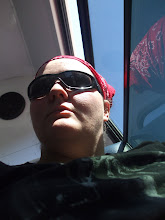Having the opportunity to take this course as a part of my requirements for the teaching program here at Willamette was an invaluable experience. I've grown up using computers and other forms of technology most of my life, but I learned a ton as a result of the course and will be able to use many of the tools I've learned in this setting in the school I eventually teach in. For the most part, I feel pretty competent when working with technology, but children growing up today are even more adaptable to the advances in technology spreading forth every day at a surprising rate.
Soon the new Oregon Educational Technology Standards (or OETS), will be implemented and required in all schools and grade levels giving all students the opportunity to live in a media/technology rich environment. The six standards are: creativity & innovation; communication & collaboration; research & information fluency; critical thinking, problem solving & decision making; digital citizenship; & lastly technology operations and concepts. Essentially what I think the standards are trying to accomplish is to create school-wide technological fluency among all students that they can reference and use in schools, jobs, and daily life. Giving all students an equal chance at success in a technological field will create and open doors for them in the future that may not have been available without said technology.
I plan on teaching elementary aged students, and hope to eventually work in special education. I'd like to talk about a few strategies I could use for each of the standards in my classroom.
1) Creativity & Innovation: using digital technology in the classroom is a hotbed for creativity and innovation. I will use different media elements for lessons to create variety in the classroom and students will be encouraged to use a medium that they are interested in.
2)Communication & Collaboration: In the classroom, when talking about cultural diversity I would like to use skype to have a talk between my classroom and another in a different country. I will also give my students the opportunity to have an international pen pal that they can talk to about their lives and what class is like.
3)Research & Information Fluency: this standard is very important, I will take my students into the computer lab at the school and we will learn ways to research information for projects and learn how to be able to identify ways of checking whether the information is valid or not.
4)Critical, Thinking, Problem Solving & Decision Making: Using and exposing technology in the classroom will give students various ways to go about the same problem.
5)Digital Citizenship : from day one, once I start exposing my students to the Internet and other technology devices used in the classroom, I will educate the students on how to conduct themselves and stay safe in a potentially hazardous environment. I will set out clear expectations for the students. I plan on using sites like www.digitalcitizenship.net to show how to behave in an Internet environment.
6)Technology Operations & Concepts: In my classroom, as mentioned before, I will use various types of media introducing the students to a variety of options. I plan on using a classroom website to show family what has been learned in the classroom. I also plan on using pod casting and the like for presentations on special projects.
As with anything in the classroom, and elsewhere, there are challenges I can foresee happening in the pursuit of technological education. One of the greatest challenges I see is access to technology. Budget cuts in schools being as they are, I can only imagine that spending on keeping technology current in the classrooms is going to be hard to ensure. I have a personal laptop that I plan on using in the classroom if there aren't going to be classroom computers available to my students and myself. My students may have limited access to computers outside of the schools, so I plan on having hard, as well as digital copies of newsletters and pertinent information. Since I will be working with young children, the learning curve may be hard to assess in the beginning because they are so young and many haven't had access to such media before, but I have no doubt that with a little practice my entire class will feel comfortable in working in such an environment.
All in all, the use of technology in the classroom is definitely something that needs to be addressed. I have to admit that I am both a little nervous and excited about using different medias in my room. I feel that using different mediums will help the students to think outside the box and enhance their educational experiences. I know that I have some reservations about technology that I am unfamiliar with myself, but I know that I will learn along side my students and we will both have opportunities for growth.
Thursday, December 17, 2009
Subscribe to:
Post Comments (Atom)

No comments:
Post a Comment